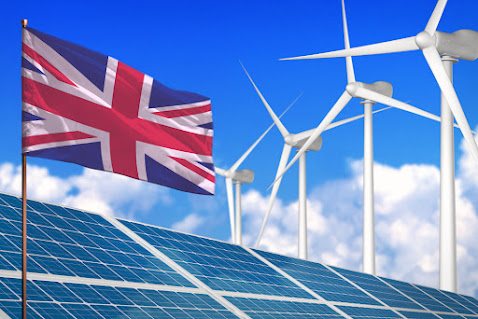Renewable Energy in the United Kingdom
A variety of publications describing energy production for the third quarter of 2017 were released by the
Department for Business, Energy & Industrial Strategy (BEIS) on February
22. The report demonstrates the constant expansion of renewable energy in the
UK.
25,244 GWh of power was produced in
2009 using renewable energy sources. Since then, it has increased by 230%, and
in 2016, 83,255 GWh of electricity was produced in total. It appears that the
expansion is not slowing down.
What are the UK's Largest Renewable Energy Sources?
The UK's largest source of renewable energy is wind, both offshore and onshore. It not only generates more power
than all other renewable sources combined in the UK by 13.8%, but also more
than all coal, oil, and other sources combined by 6.5%.
Scotland produces the most renewable
energy in the UK than any other region. While renewable energy has increased,
less coal has been used to generate electricity. 57,438,000 tonnes were
consumed in 2006, but only 12,058,000 tonnes were consumed in 2016.
Wind
In the United Kingdom, a growing
portion of the energy is provided by wind energy. Beginning in February 2020, there
were 10,429 wind turbines producing wind energy, with a total installed
capacity of approximately 22 GW, including 8,483 MW offshore and 13,575 MW
onshore. This is an increase from 2015 when there were 7,950 MW onshore and
4,049 MW offshore. After passing France and Italy in 2012, the UK is now the
sixth-largest generator of wind energy in the world.
Nearly three-quarters of the
population in the UK agree with the use of wind power, according to polls that
have been conducted on the subject, including among those who live beside
onshore wind turbines. In the UK, wind power is anticipated to grow going
forward.
Ocean force
The UK has a lot of potential for
producing electricity from wave and tidal power because of its island location.
Wave and tidal power have gotten very little funding for development yet,
and as a result, they have not yet been widely utilized commercially due to
concerns about their economic viability in the UK. A grid-connected wave power
project is run by the European Marine Energy Centre in Orkney at Billia Croo
outside of Stromness, while a grid-connected tidal test site is located in a
small canal between the Westray Firth and Stronsay Firth.
Public Opinion on Renewable Energy
and Climate Change in the UK
The BEIS has been conducting a
quarterly survey to determine its top priorities since March 2012. According
to the most recent study, which was completed in December 2017,
●
79% of those surveyed are in favor of renewable energy.
●
Climate change is a concern for 71% of the respondents.
Only 21% of respondents in 2017—up
from 10% in 2012—see climate change as one of the top three difficulties the UK
is now facing. Despite the rise in numbers, there is still much work to be
done. You can contribute to the fight against climate change by installing an
air-to-water heat pump or just double-glazing your windows.




Comments
Post a Comment